In today's digital age, teamwork and collaboration are essential for success in any business venture. That's why we've compiled a list of 13 top-notch content collaboration platforms that can help you take your team productivity to new heights. Keep on reading to discover the ultimate must-have software solutions for seamless teamwork.
Collaboration is key to any successful project, but managing multiple contributors and keeping everyone on the same page can be daunting. That's where content collaboration platforms come in – these powerful tools allow teams to collaborate seamlessly, sharing ideas and feedback in real-time. But with so many options, knowing which platform is right for your needs can be tough. Here are some of the best content collaboration platforms available today to find the perfect tool for your team.
Navigation of Contents
1. Zoho Workdrive
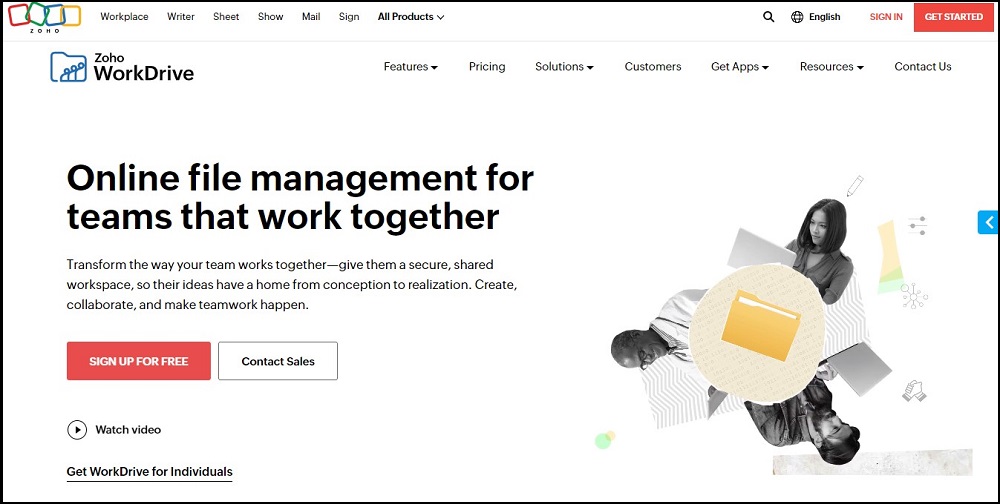
Zoho Workdrive is an all-in-one content collaboration platform that allows teams to store, share, and manage their files in a secure environment. With this tool, you can create customized workspaces for your team where everyone can access duplicate files and folders.
One of the significant benefits of Zoho Workdrive is its user-friendly interface; it's easy to navigate even for beginners. With just a few clicks, you can upload various documents like images, videos, audio clips, or PDFs. And don't worry about file size limits, as there aren't any!
Features
- Advanced security measures like two-factor authentication
- Import/export files
- Shared spaces to store
- No file size limits
2. ProofHub
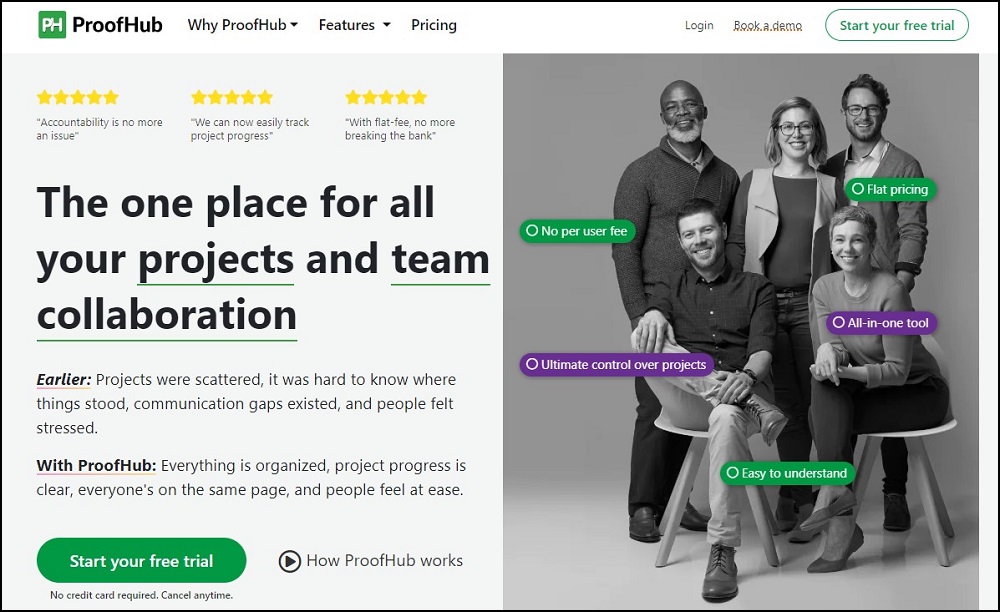
ProofHub is an online project management software that enables teams to collaborate and manage their projects effectively. It offers task management, time tracking, Gantt charts, calendars, discussions, notes, proofing tools, etc.
Another feature that sets ProofHub apart is its customizable workflows. You can create custom workflows for different types of projects or even customize them per user. This makes it easier for teams to stay on top of their tasks and deadlines while ensuring everyone knows their responsibilities.
Features
- Integrate with third-party apps
- It has built-in proofing tools, ProofHub
- A comprehensive set of project management tools
3. Trello
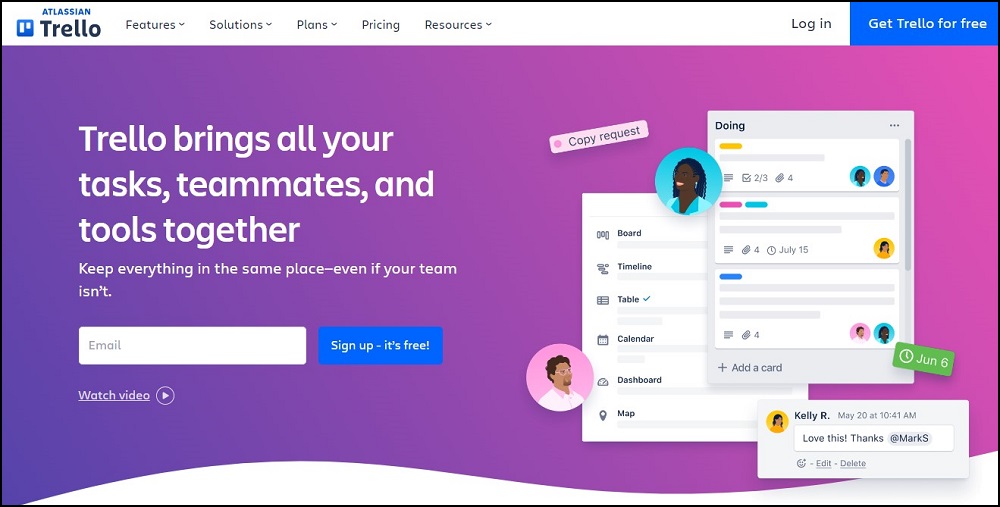
Trello is a popular project management tool that can also be used for content collaboration. It uses the Kanban board approach, allowing users to organize tasks and ideas into lists and cards.
One of Trello's key features is its flexibility. Users can customize their boards with colors, labels, checklists, due dates, attachments, and more. This makes it easy to tailor the platform to different types of projects or teams.
Features
- Offers integrations with other tools
- User-friendly interface
- Trello supports real-time collaboration
4. Google Workspace
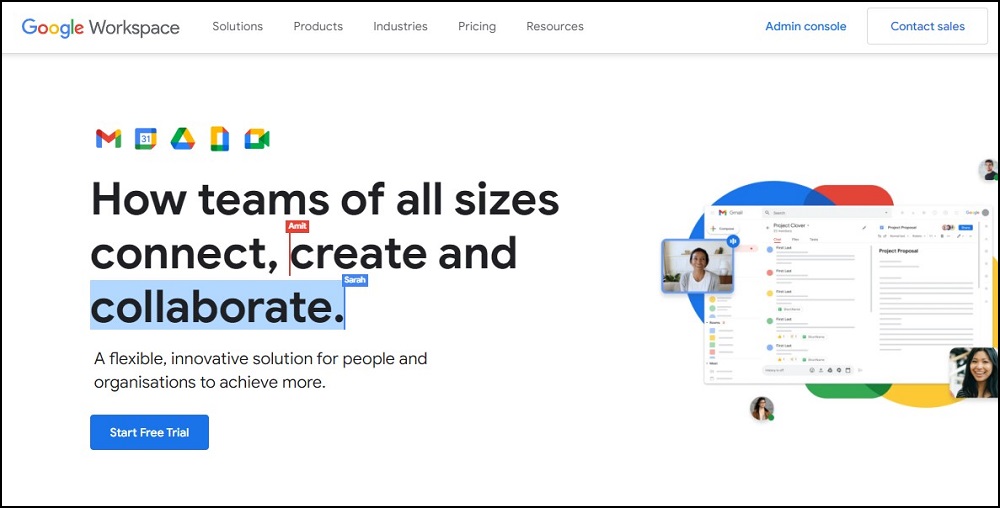
Google Workspace is a cloud-based collaboration tool that enables teams to work together on documents, spreadsheets, and presentations in real-time. It includes Google Drive for storing files, Gmail for email communication, and other productivity tools such as Google Meet, Calendar, Sheets, Docs, and Slides.
One of the key advantages of using Google Workspace is its accessibility. With an internet connection, you can access your files from anywhere via any device with a web browser. It makes collaborating with team members working remotely or in different locations easy.
Features
- Ability to share files easily
- Allows multiple users to work on a document simultaneously,
- Speedier feedback cycles,
- Offers G Suite's functionalities
5. Dropbox Business/Dropbox Paper
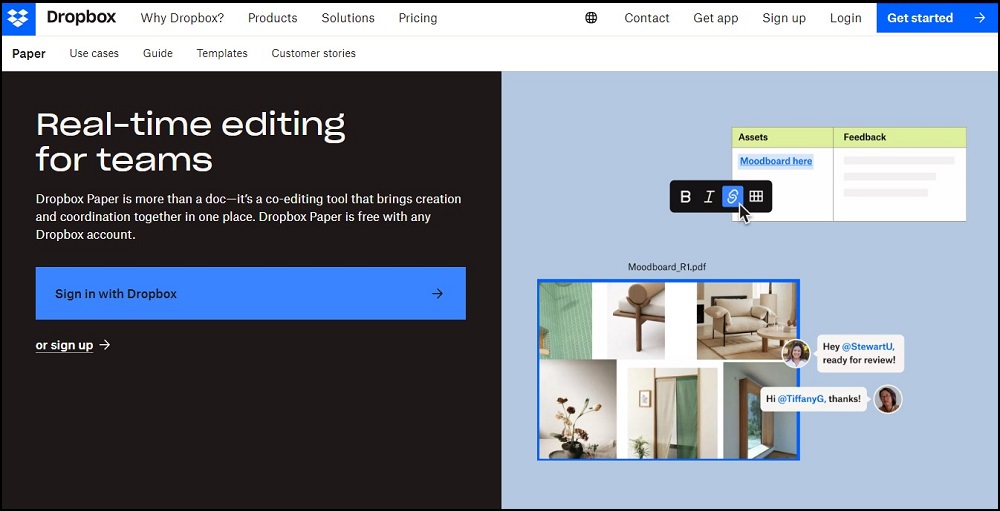
Dropbox is a popular cloud storage platform that offers file hosting, sharing, and collaboration services. Its business version, Dropbox Business, includes advanced features suitable for teams and organizations. It allows team members to access files from anywhere at any time while providing necessary controls to the admin.
One of the most prominent features of Dropbox Business is its Paper tool. The tool helps users create and collaborate on documents in real time. Users can easily add images, videos, tables, or other media types to their documents.
Features
- The Paper feature
- The commenting system
- It integrates with other applications
- Reliable cloud-storage service
6. GatherContent
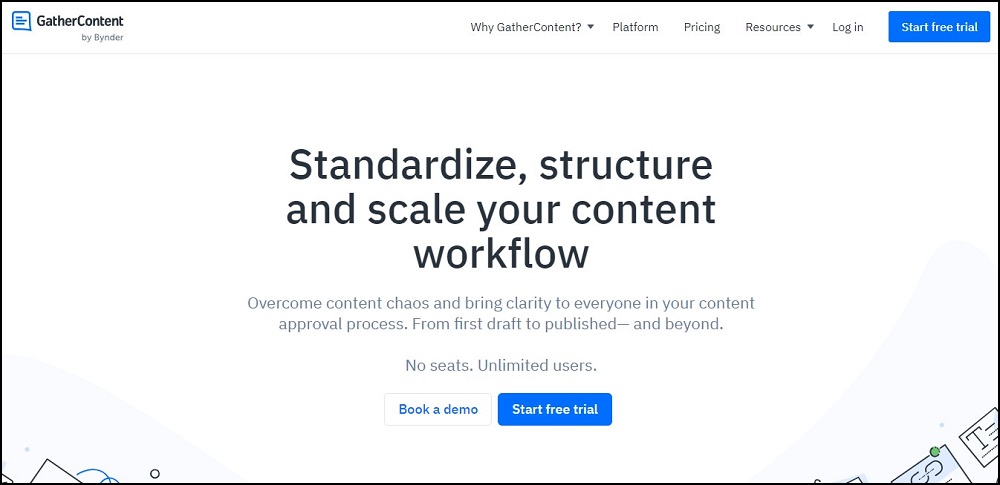
GatherContent is a content collaboration platform that helps teams create and manage content efficiently. It provides an all-in-one solution for content planning, creation, review, and approval.
The platform offers a centralized workspace where team members can collaborate in real-time on various aspects of the content creation process. From outlining ideas to creating drafts and finalizing copies, GatherContent streamlines the entire workflow.
Features
- Customizable workflows
- Easily organize their documents
- Integrates well with other popular platforms
- Easy-to-use project management software
7. Confluence
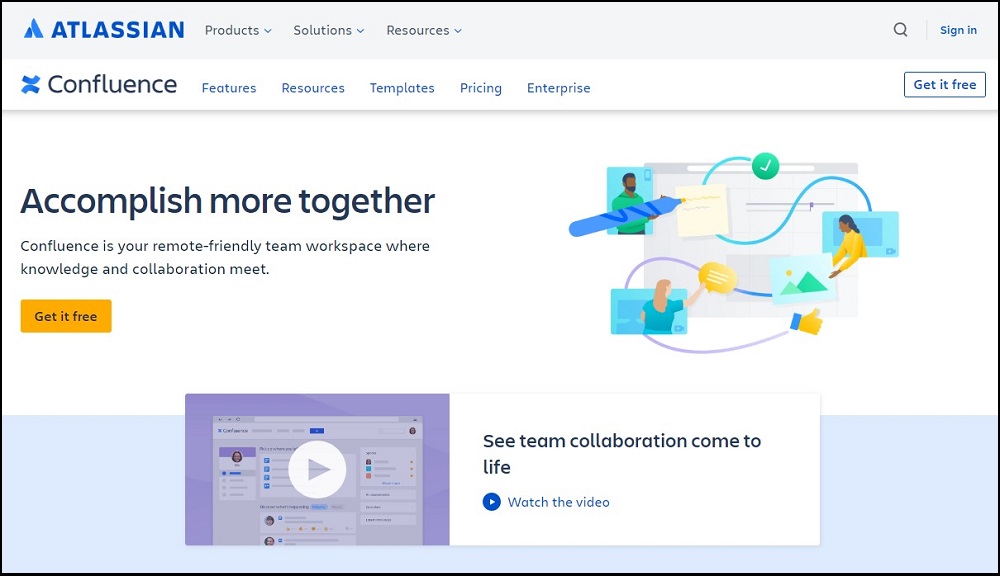
Confluence is an Atlassian platform that focuses on team collaboration and content management. It allows teams to create, share, and organize their work in one place. With Confluence, you can keep track of your project's progress, assign tasks to team members, and collaborate with other departments.
One of the best features of Confluence is its flexibility. You can customize pages to fit your needs using the WYSIWYG editor or editing in HTML. This makes it easy for non-technical users to create professional-looking documents without coding skills.
Features
- Integration capabilities with other tools
- Ability to restrict access levels
- You can set page-level permissions
- Flexible
8. BoostHQ
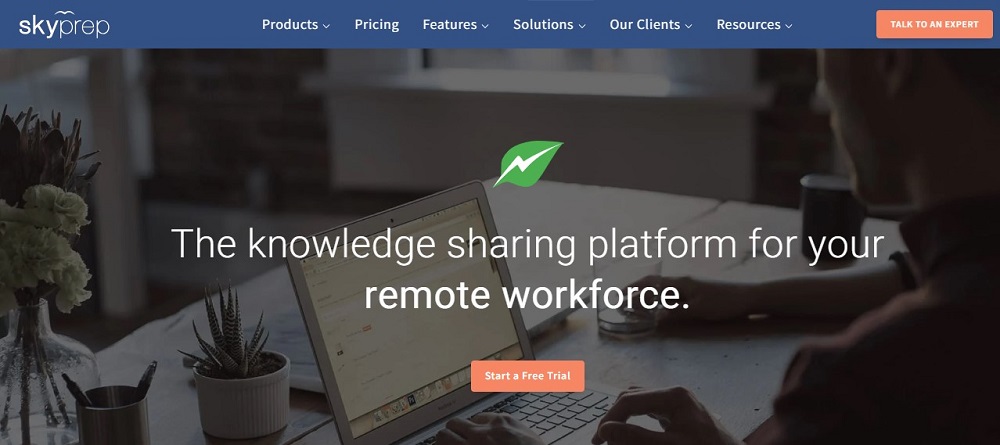
BoostHQ is a content collaboration platform that improves team communication and knowledge sharing. The tool allows teams to collaborate, share ideas, and build a centralized knowledge base for easy access to information.
One of the best features of BoostHQ is its ability to create custom collections where users can organize their content into specific categories, such as marketing materials or company policies. These collections make it easier for team members to find the necessary information without sifting through irrelevant data.
Features
- Analytics feature
- Integrations with other tools
- User-friendly platform
9. CELUM
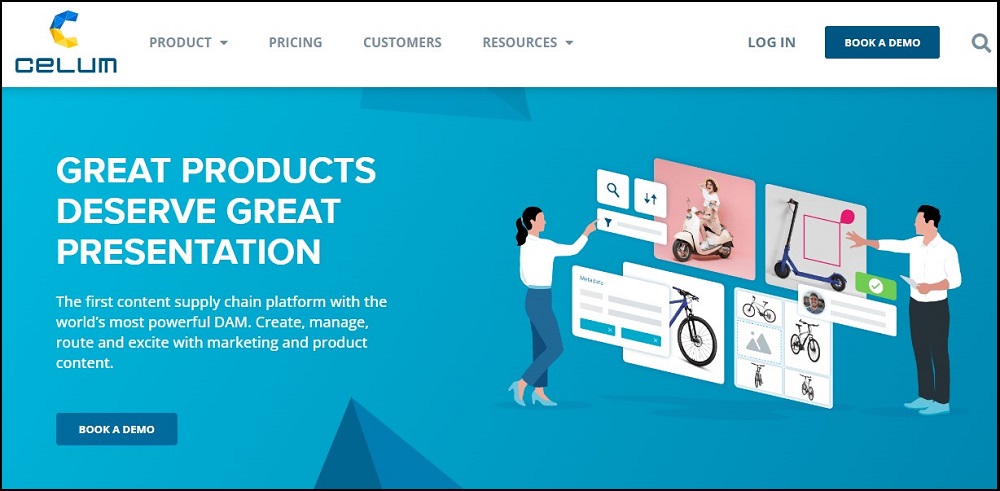
CELUM is a cloud-based digital asset management (DAM) platform that offers powerful tools for managing and sharing content. With CELUM, teams can collaborate on real-time projects, streamline workflows, and ensure consistency across all their content.
One key feature of CELUM is its intuitive user interface – even non-technical users will find it easy to navigate and use effectively. The platform also offers robust metadata management capabilities, making it easy to tag and search for assets quickly.
Features
- Flexible
- User-friendly
- Strong collaboration features
- Automation capabilities
10. Apple iCloud
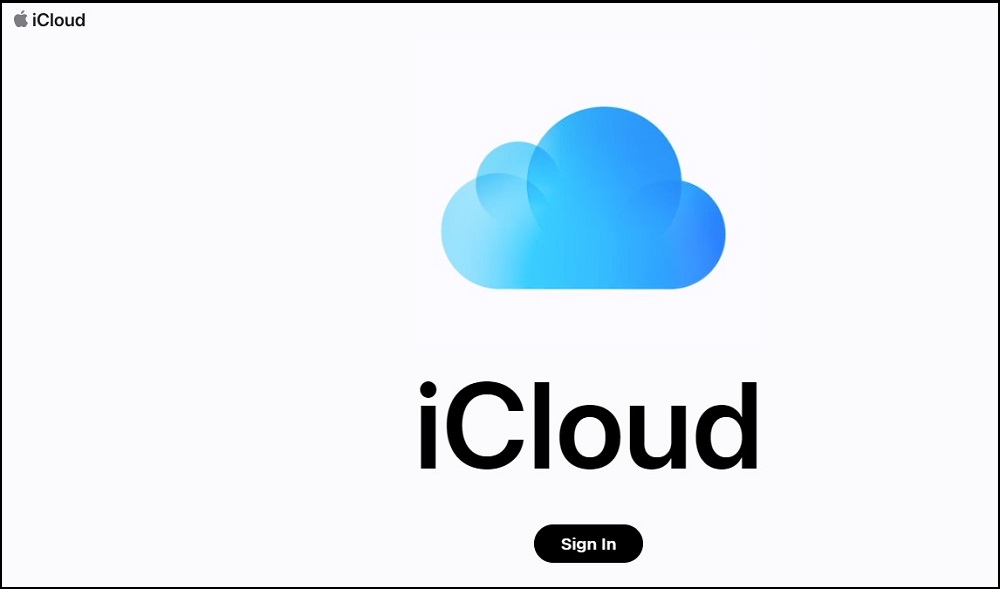
Apple iCloud is a cloud-based service that allows users to store and access their files from any Apple device. It is an excellent content collaboration tool for those who use Apple devices regularly.
One of the significant advantages of using Apple iCloud is its seamless integration with all Apple devices, including Macs, iPhones, iPads, and even Windows computers. This means you can easily sync your files across all your devices without worrying about compatibility issues.
Features
- Easy to use
- Robust security features
- With 5GB of free storage available
- Real-time updates
11. ClickUp
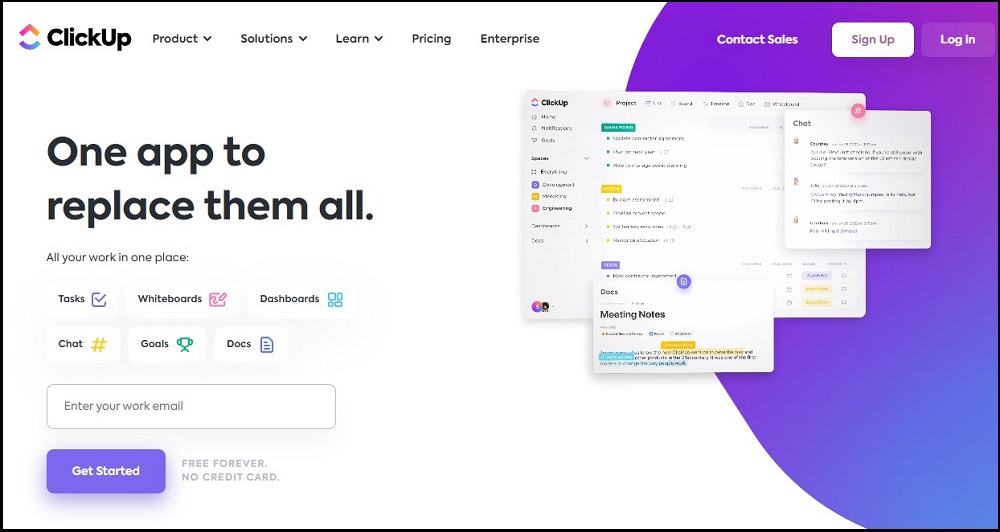
ClickUp is a project management tool designed to help remote teams stay organized and on track. One of the key features of ClickUp is its customizable workspace that allows users to create unique workflows.
With ClickUp, you can easily assign tasks to team members, set due dates, and monitor progress in real-time. The platform integrates with tools like Zoom, Slack, and Google Drive.
Features
- Multitasking capabilities.
- User-friendly interface,
- Offline Mode
- Custom permissions
12. Huddle

Huddle is a cloud-based content collaboration platform that allows teams to work together on projects from anywhere in the world. It offers a range of features, such as secure file sharing, task management, and real-time collaboration tools.
One of the key benefits of Huddle is its ability to streamline communication between team members. With Huddle, users can create tasks and assign them to specific team members, set deadlines, and receive notifications when tasks are completed.
Features
- Offers powerful document collaboration tools.
- Encryption security measures
- Real-time communication tools
13. MS Sharepoint
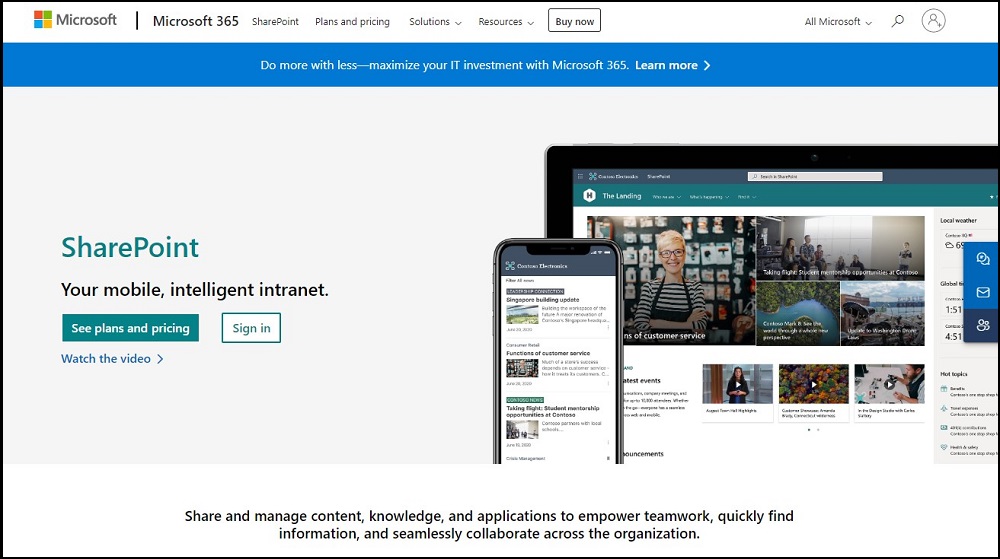
MS Sharepoint is a web-based collaboration and content management platform for organizations to enhance teamwork and productivity. It offers tools such as document libraries, lists, workflows, and team sites, allowing teams to manage projects efficiently.
One notable feature of MS Sharepoint is its integration with other Microsoft applications like Outlook and Office 365. It makes it easier for users to collaborate on documents in real-time without switching between different platforms.
Features
- Top-notch security features
- User-friendly interface
- Integrates with other Microsoft applications
Conclusion
As businesses continue to evolve and grow, the need for effective content collaboration becomes more important than ever. Choosing the best content collaboration tool depends on what works best for your team's workflow and requirements. The above list of platforms will help you understand which will work effectively based on criteria such as ease of use, cost-effectiveness, and scalability.